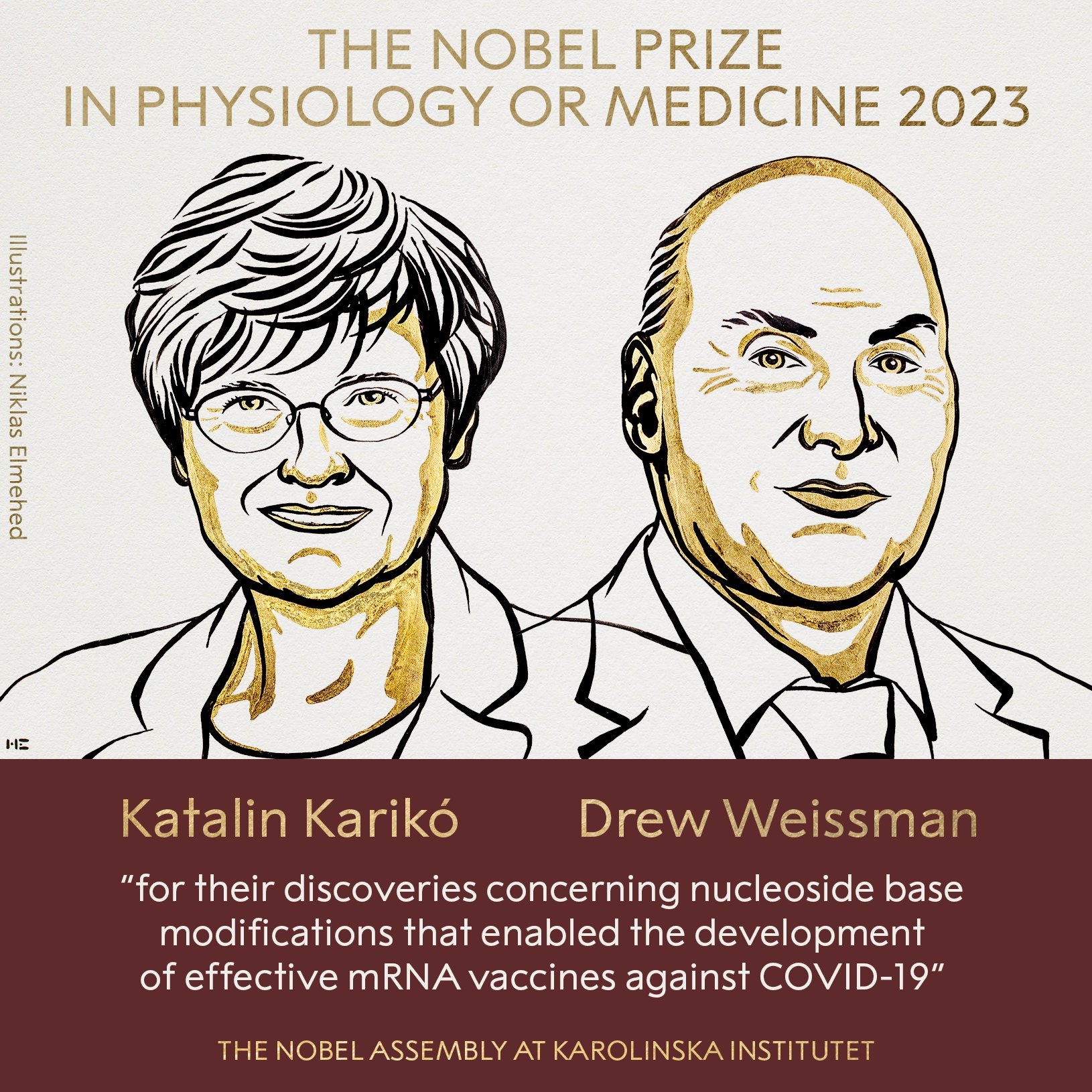Like every year, Nobel Week began with the announcement Nobel Prize in Medicinewhich finally came into my hands Katalin Kariko and Drew Weissman to develop an mRNA vaccine against coronavirus.
The announcement took place little more than 11:45peninsular time of Spain (also Swedish time), in the Nobel Assembly located in Karolinska Institutet, in Sweden. As for the person responsible for the dissemination of information, as is usually the case, he was Thomas PerlmannSecretary of the Nobel Committee on Medicine.
Nobel Prize winners in medicine will have to share SEK 9 million, which is approximately equivalent to 830,0000 euros. It’s worth it for the research that has, without a doubt, helped and will continue to help millions of people, saving countless lives.
Nobel Prize in Medicine for coronavirus vaccines
The Nobel Prize in Medicine was expected to be awarded to them in 2021, when the effectiveness of their research was more than demonstrated. We waited two years, but here it is.
Without a doubt, this study is highly deserving of an award in this category. mRNA technology for vaccine development is not new. In fact, research has already been and continues to be done to prevent diseases caused by other pathogens. like HIV. But Catalin Kariko and Drew Weissman of the University of Pennsylvania have dived into the data they have gathered so far at breakneck speed to quickly create an effective and safe vaccine against the virus that has managed to paralyze the entire world. Therefore they fully deserve Nobel Prize in Medicine. But how do their vaccines work?
Messenger for training the immune system
Traditional vaccines introduced complete but weakened pathogens into the body. train the immune system. That is, they weakened viruses and bacteria so that our bodies would detect something strange and prepare to fight it, but without suffering the consequences of the disease. Thus, given that this first attack generates immune memory through antibodies, we would already be prepared for this pathogen to emerge naturally, without weakening.
The problem is that no matter how much they were weakened, they sometimes caused quite a lot of side effects. For this reason, alternatives have begun to be developed that do not introduce full-fledged microorganisms, but part of its structure. In general, protein. Thus, the immune system has developed antibodies against it, so that when it returns to the body, accompanied by the rest of the pathogen, there will be something to fight against.
But it was something Expensive and sometimes not safe enough. Therefore, what would happen if the body itself produced part of the pathogenic agent that we want to prevent?
Vaccines that saved millions of lives
The body’s genetic material, whether RNA, like the COVID-19 coronavirus, or DNA, like ours, contains information about everything the body needs to survive. But for this to happen, it must be converted into proteins. Proteins are synthesized in organelles called ribosomes found inside cells. However ribosomes No they know read DNA or RNA directly. They must first be transcribed into another molecule called messenger RNA (mRNA).
Thus, mRNA technology is developing vaccines in which mRNA is injected into the body with instructions to create a protein from the pathogen that is being prevented. Kariko and Weissman have developed vaccines that introduce an mRNA molecule into the body that, once captured by the ribosomes of our cells, is used to synthesize the protein of SARS-CoV-2, the coronavirus that causes COVID-19. This way, you won’t have to manipulate the virus or introduce any of its components into your body. We make it convenient to train the immune system.
If today we can lead a normal life and live with Covid-19 completely calmly, it is thanks to coronavirus vaccines. We knew that Kariko and Weissman would receive the Nobel Prize in Medicine, and finally the day has come.

Thirteenth woman to win the Nobel Prize in Medicine
He Nobel Prize in Medicine This is the scientific award of the Swedish Academy that has been won most by women. Despite this, only twelve women have achieved this so far. There were many others who deserved it, but in the end it fell into the hands of their bosses or colleagues. A good example of this is Rosalind Franklinwhose work was instrumental in the discovery of the structure of DNA, despite the fact that only Francis Crick, James Watson and Maurice Wilkins received the Nobel Prize for this work.
I hope something changes. Katalin Kariko He deserved the Nobel Prize in Medicine as much as Drew Weissman, and both names resonate today at the Karolinska Institutet. Now it is still unknown what will happen to the rest of the awards.
More tomorrow
After the announcement of the Nobel Prize in Medicine, it’s time to Physics Prize, which will be announced tomorrow, October 3rd at 11:45 am. from the Royal Swedish Academy of Sciences.
Source: Hiper Textual














